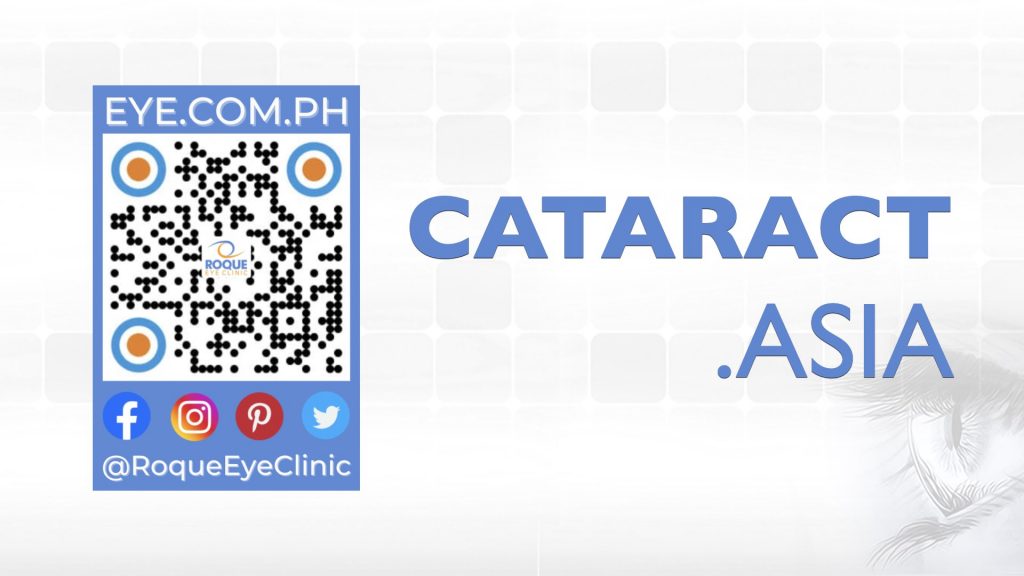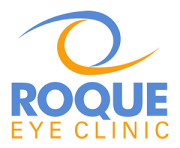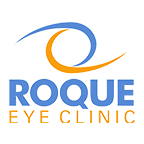
You are here because you have been searching for answers to questions regarding bladeless Femtosecond Laser-Assisted Cataract Surgery (FLACS).
We have all the answers for you, including videos, animations, and comparison tables.
FLACS ANIMATION
FLACS
A small instrument will be placed between your eyelids to keep you from blinking. In Bladeless Laser Cataract Surgery (aka Femtosecond Laser Assisted Cataract Surgery or FLACS), the laser is used to make the opening in the eye, an opening in the lens itself and to treat the lens. Dr. Roque uses the advanced Alcon LenSx system. If needed, an ultrasonic instrument will then gently break the cataract into microscopic particles, which are then suctioned away.
FLACS
FEMTOSECOND LASER-ASSISTED CATARACT SURGERY FEES
CASH OUT PER EYE IN PHILIPPINE PESOS
FLACS FEES
| SENIOR CITIZEN & PWD | NON-SENIOR-CITIZEN & NON-PWD | |||||||
|---|---|---|---|---|---|---|---|---|
| PROFESSIONAL FEE (PER EYE) | ||||||||
| Philhealth | YES | NO | YES | NO | YES | NO | YES | NO |
| HMO/Insurance | YES | YES | NO | NO | YES | YES | NO | NO |
| Cash Out | 0 | 6,400 | 30,000 | 35,715 | 0 | 6,400 | 43,600 | 50,000 |
| INTRAOCULAR LENS (IOL) IMPLANT | ||||||||
| Premium | 71,430 | 100,000 | ||||||
| Standard | 32,143 | 45,000 | ||||||
| Basic | 10,000 | 14,000 | ||||||
| HOSPITAL FEES | Third party payors (HMO/Insurance) or the patient pays for the hospital fees. | |||||||
LEGEND
- IOL. Intraocular Lens implant. Implanted to improve vision after cataract surgery.
- PHILHEALTH. Philippine Health Insurance Corporation. First Payor. If cataract surgery is pre-approved, Philhealth provides coverage of 16,000 pesos. 9,600 pesos is retained by the hospital. 6,400 is released to the surgeon.
- HMO. Health Maintenance Organization. Second Payor. Provides coverage, after Philhealth, for the rest of the hospital bill and professional fees. If Philhealth is not available, the HMO usually requires the individual to shoulder the Philhealth coverage of 16,000 pesos. An IOL is usually not covered and is paid out of pocket.
- BASIC. Cataract surgery is performed to remove the opacified crystalline lens and decrease refractive error. A monofocal intraocular lens (IOL) that corrects a single point of focus, usually far is implanted. It provides clear distance vision, but does not correct astigmatism and near vision. The individual must use progressives or bifocals.
- STANDARD. Cataract surgery is performed to remove the opacified crystalline lens and decrease refractive error. Astigmatism is removed with a Toric IOL implant or limbal relaxing incisions. Astigmatism is a type of refractive error in which the eye does not focus light evenly on the retina, resulting in distorted or blurred vision at all distances. Computer (intermediate) and reading (near) glasses are required.
- PREMIUM. Cataract surgery is performed to remove the opacified crystalline lens and decrease refractive error. A multifocal or Extended Depth of Focus (EDOF) IOL that corrects all distances (far, intermediate, near) is implanted. Premium IOLs provide around 90% spectacle independence in the real-world setting. One may need to use prescription glasses 10% of the time (small print, low light conditions, bright light conditions). MULTIFOCAL lenses are less dependent on reading glasses, but have more glare and halos at night. EDOF lenses require +1.00 to +1.25 D for near vision tasks, but have less glare and halos.
- PRESBYOPIA. Presbyopia is a condition associated with age. As people age, the lens becomes harder and less elastic, making it more difficult for the eye to focus on close objects. Presbyopia correcting IOLs, e.g., multifocal IOLs, correct all distances. See MULTIFOCAL.
- ADDON. A second intraocular lens implant is inserted in an anatomic space called the sulcus in front of an existing intraocular lens placed in the capsular bag. It may correct for post-operative spherical refractive errors, astigmatism, and presbyopia. The SML, Scharioth Macula Lens, is a Low Vision implant useful for patients with age-related macular degeneration or another maculopathy (central vision problems).
- NON-ASPHERIC (SPHERICAL). A spherical intraocular lens can induce minor optical imperfections called higher-order aberrations (HOAs), which can affect the quality of vision, particularly in low-light conditions such as driving at night.
- ASPHERIC. Premium aspheric IOLs approximate the shape and optical quality of the eye's natural lens and provide sharper vision, especially in low light conditions and for people with large pupils.
- Alcon LenSx Femtosecond Laser-Assisted Cataract Surgery (FLACS) with intraocular lens implantation under local anesthesia is performed:
- by Dr. Manolette Roque
- in St. Luke's Medical Center Global City each Monday, Wednesday, and Friday afternoon. Scheduled patients must arrive one (1) hour before surgery. If cataract surgery is under general anesthesia, patients must arrive two (2) hours before surgery.
- with the Alcon LenSx Femtosecond laser for FLACS.
- with any of the following phacoemulsification units: Zeiss Quatera 700, Alcon Centurion, Alcon Infiniti, or B+L Stellaris.
- Cataract screening and post-operative follow up examinations may be done in Asian Hospital MOB 509 or St. Luke's Medical Center Global City MAB 217.
- FLACS is performed under local anesthesia in St. Luke’s Global City.
- STOP the following medications, one (1) week prior to planned cataract surgery:
- All blood thinners (Aspirin, Aspilet, Clopidogrel, Heparin, Enoxaparin, Ardeparin, Danaparoid, Warfarin, Vitamin E, Gingko Biloba)
- All prostate medications (Harnal, Tamsulosin, Flomax, Hytrin, Avodart, Duodart, Proscar, among others)
- The hospital fees estimate for routine FLACS performed under local anesthesia is around 80,000 pesos.
- If conscious sedation is requested, expect an additional 45,000 pesos or more to your hospital and anesthesiologist fees.
- If general anesthesia is required, expect an additional 80,000 pesos or more to your hospital and anesthesiologist fees.
- FLACS combined with trauma, glaucoma, uveitis, cornea, or retina diseases are much longer, require more consumables, and are therefore associated with additional expenses.
- FLACS Inclusions:
- 3 free post-operative follow-up visits (usually on day 0 or 1, week 1, month 1).
- FLACS Exclusions:
- Pre-operative consultation
- pre-operative diagnostic tests
- pre-operative medications.
- post-operative follow-up visits beyond the third visit or one month.
- FLACS Menu is inclusive of Philhealth and Senior Citizen discount whenever applicable. Senior Citizen ID and PWD ID must be shown and the official receipt must be signed to avail of the eVAT exemption. Government-mandated discounts may not be combined with other promos. Double discounting is not allowed.
- Additional charges will be billed for the use of Iris Hooks, Capsule Hooks, Malyugin Rings, IRing pupil expanders, JetRing CTR, Triamcinolone Acetonide, Anti-VEGF injections, Ozurdex Dexamethasone implant, and other devices.
- Philhealth pre-approval is required five (5) working days before the scheduled surgery. Please submit your Philhealth ID, MDR, and other documents one week before a scheduled surgery.
- Only Philippine FDA-registered IOLs may be used when availing of Philhealth benefits. For premium IOLs that are not yet registered, Philhealth may not be filed.
- HMO letter of authorization (LOA) or Insurance guarantee of payment (GOP) needs to be requested three (3) days before a scheduled surgery.
- Cancellation and No Show Policy
BOOK AN APPOINTMENT
It takes less than 5 minutes to complete your online booking. Alternatively, you may call our BGC Clinic, or our Alabang Clinic for assistance.


